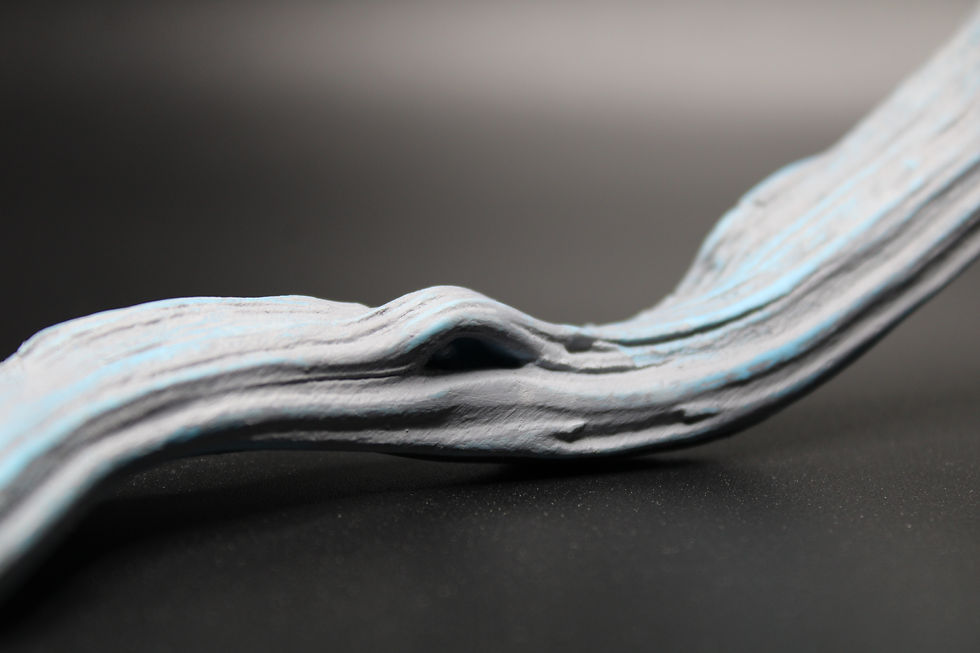Scan, Scale, Print - Tips for scaling a 3D scan for 3D printing
- Matthew Fisher
- 12m
- 4 min read
3D scanning provides a great way to capture items so it can be change in a modeling software. Whether its a big or small object, once an object is a mesh (the file made from a scan) you can manipulate it using sculpting tools or other editing CAD capabilities.

This is incredibly useful when you want to scale a part for 3D printing or create a CnC tooling from it. Mesh files can be scaled to different sizes while maintaining the highly detailed features of the real-world part that have been captured by the scanner. And this newly scaled mesh can be further modified by splitting it into sections for future assembly, or mix CAD features into it to assist with printing.
In this blog we’ll discuss some tips to keep in mind while trying to scale a 3D scan for printing or CAD design. This way your prints can come out perfect and you can troubleshoot common issues when it comes to scaled mesh files!
Tip One - Verify Polygon Count
Polygons, which are the triangles that make the shape of a mesh, tend to be high (1 million+) for 3D scans. So high, some computers need to have the polygon count reduced in order to import into a printing or CAD software. Many of these triangles however can be combined into one larger one without sacrificing the mesh details - especially if the part has flat surfaces.

If you're running into import issues due to the file size/polygon, running a mesh simplification process in a mesh editing software (like Blender or ZBrush) can make it much easier to work within the printing or CAD software. Additionally, you can reduce often times by up to 80% and not notice a difference in quality. Making it much easier and faster to scale or rotate your parts around! Keep in mind that when you reduce a mesh by a significant number of polygons it will also affect the resolution (smallest visible feature) and may make details become less prominent in the final print.
Tip Two - Adapt to Tools and Layering Used
Depending on the manufacturing process used there will be limits to the quality and minimum sized features it can make. When you scale a mesh you're going to be directly affect the the thickness, heights of bumps, and texts of the part. This may result in some features being difficult to see in the final output or even too thin to machine/print.

Before running a scaling process on the mesh verify the minimum feature size your tools can work with and that even after scaling, the features can still meet it. For example, with a printer running a nozzle of 0.4mm you'll have a harder time getting details from items you've scaled smaller when compared to a 0.2mm, as this nozzle can print in a finer detail and smaller lines.

Tip Three - Scaling uniformity
Meshes files are great for scaling due to the polygons ability to maintain uniformity during the change. Each vertex of a polygon is driven by an XYZ coordinate, which scaling is modifying these based on a value you enter. The way each of these coordinates change can also be affected based on the center point of scaling, or if a non-uniform scaling method is chosen. If these are left unchecked, you may accidentally scale the item improperly and have ill-fitting matching surfaces or scaling in unintended directions.


Before starting any scaling process, verify that you have the correct scaling settings you need enabled and have aligned the mesh to a coordinate system. It's easy to have an improperly centered scaling, resulting in subtle shifts that change the final version of the mesh. Also, when the mesh is in a proper orientation so a non-uniform scaling extends the features in one single direction. Tip Four - Check Import and Feature Units before and after scaling
When importing a mesh the units of each polygon will be set based on your export and import settings. If the mesh file was exported in millimeters you'll need to import the mesh also in millimeters, or else your mesh will be automatically scaled by the conversion change. Additionally, features made to specific dimensions will get scaled along with the the entire 3D scan as it's apart of the "mesh body."

Verifying the units and verifying post-import may seem like a simple task, but it's often overlooked and can't be changed later if you've started modeling/modifying the data. The same goes for adding features post-scaling. If you create specific cuts and realize the model needs to be 10% larger, the cuts will also be 10% larger. If you have specific dimensions that a hole needs to be on the scaled mesh, add these after scaling within your CAD/Sculpting software. Or, create CAD bodies that represent your cutouts (such as cylinders for pins, planes for flat surfaces) and use them to boolean (delete) from the mesh after scaling.
Closing Notes
Scaling a mesh is a great way to capture something small or large and make fantastic replicas at different sizes. The combination of the high-resolution 3D scan and the mathematically perfect ability to scale the data makes it a great for when the details matter most.
Before starting any scaling, making small checks like the ones outlined above can help with ensuring you're making the most idealistic model and that your tools can properly make them how you intended.

Interested in learning more about how your products or artwork can be digitized and replicated? Reach out to our team via arkify3d@gmail.com or use the Contact form on our website. Happy Scanning!




Comments